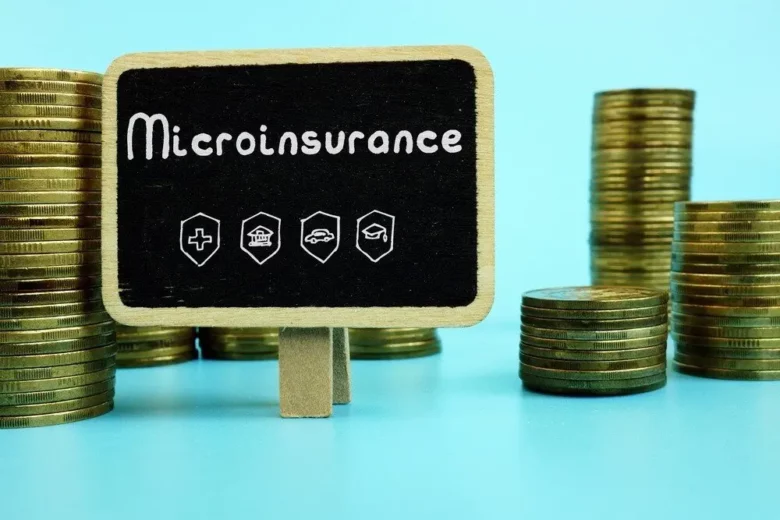Microinsurance is a type of specialized insurance designed to provide affordable coverage to low-income people who may be excluded from the traditional insurance market. It has significantly lower rates than standard insurance products and is designed to provide basic protection against hazards such as health problems, accidents, property damage, and even death. The idea is to meet the needs of the poor, especially in underdeveloped countries where term life insurance is sometimes lacking. Microinsurance provides these people with security so that financial problems due to unexpected circumstances do not lead to further poverty.
1. The Value of Microinsurance
Especially in low-income and emerging regions, where people are exposed to significant financial risks due to illness, accidents, or natural disasters, microinsurance is crucial. For these people, microinsurance is an important tool because it provides an affordable way to protect themselves from danger. When the financial crisis hit, many low-income households were forced to sell assets, borrow money, or take on significant debt without insurance. Microinsurance reduces the burden of such risks by providing low-cost alternatives to financial protection, preventing individuals from falling deeper into poverty, and promoting financial stability for vulnerable groups.
2. The Mechanism of Microinsurance
Microinsurance offers low-cost, streamlined insurance packages that cover a variety of risks at more reasonable rates than traditional insurance. These policies are typically targeted at people in low-income areas and may cover property damage, health problems, life-threatening problems, or agricultural problems. Although coverage is sometimes limited, it is sufficient to protect people from the worst financial burdens of unexpected circumstances. Many microinsurance products are offered through non-traditional channels, such as mobile platforms, local agents, or community organizations, making it easier to reach rural and poor areas. The premium amount for microinsurance is reasonable for people with limited financial resources.
3. Microinsurance: Types
Microinsurance comes in many forms, each designed to address specific needs and risks. One of the most common types of microinsurance in healthcare covers basic medical needs, including doctor visits, hospitalizations, and medications. Also widely available is life microinsurance, which guarantees a payout in the event of the insured’s death, protecting the family from financial hardship. Another common type of microinsurance for crops, especially for farmers, protects against losses caused by natural events or crop failure. Property microinsurance protects your home and personal belongings from damage caused by fire, flooding, or theft. Finally, micro-accident insurance pays for unexpected accident-related expenses, including medical bills or lost income.
4. Benefits of Microinsurance
People on low incomes who might otherwise not have adequate financial security can find microinsurance very useful. The price is also one of the main benefits. This insurance is available to the poor because the premiums are lower than those of traditional insurance, allowing them to protect their families and themselves from significant financial losses. By enabling policyholders to control the costs of medical events, accidents, or deaths, microinsurance can also provide financial stability by enabling them to avoid loss of livelihood or property. It is a useful tool for reducing poverty by mitigating the financial impact of disasters and supporting economic resilience. Microinsurance also spreads risk by helping communities pool their resources to help people in times of need.
5. Problems with Microinsurance
Despite its enormous potential, microinsurance comes with several challenges that can limit its impact. Lack of awareness of insurance products among low-income groups is a major barrier. Low enrolment and participation rates may be because many people do not fully understand how microinsurance works and what its benefits are. The limited coverage of microinsurance poses another challenge. While it offers some protection, the coverage is often small and insufficient to cover more common and complex risks. Furthermore, the sustainability of microinsurers can be a challenge, as they may find it difficult to remain profitable while keeping costs low. This can lead to insufficient coverage or the failure of the provider, leaving the policyholder without help. Microinsurance schemes can also be prone to fraud and mismanagement, which undermines trust and hinders wider adoption.
6. Use of Technology in Microinsurance
The accessibility and efficiency of microinsurance have become more possible, largely thanks to technology. Mobile phones in particular have changed the way microinsurance is used and monitored. Mobile technology allows customers to purchase insurance, pay premiums and file claims remotely and instantly, without having to travel to a physical office. This is especially important in remote areas where access to banks or insurance companies may be limited. In countries like Kenya, where traditional banking infrastructure is limited, mobile money systems like M-Pesa have given millions of people access to microinsurance. Technology also enables insurers to save money, streamline administrative processes, and increase transparency, which in turn increases customer confidence.
7. Who Should Consider Microinsurance?
Those who do not have access to traditional insurance products or are financially vulnerable will benefit most from microinsurance. This includes low-income workers, smallholder farmers, and households in less developed countries, who earn little and are more likely to experience financial hardship. People who may not have access to employer-sponsored health insurance or cannot afford high premiums also find microinsurance useful. Without the sometimes prohibitive costs of traditional insurance policies, it offers a reasonable option for those seeking protection against hazards such as illness, accident, or property damage. Microinsurance helps people manage risk and protect their finances by providing simple coverage at reasonable costs.
Conclusion
For poor, low-income groups, microinsurance offers a powerful answer to financial security. Microinsurance enables people to absorb financial shocks and prevent the serious consequences of unexpected disasters, including illness, injury, or natural disasters, by offering affordable premiums and basic coverage against a range of perils. While there are certain problems with microinsurance, such as inadequate coverage and lack of common sense, the benefits far outweigh the drawbacks. Microinsurance is becoming increasingly accessible to people in remote and hard-to-reach places thanks to technology that distributes policies and streamlines payments. For those who need affordable prices, microinsurance can be a great tool to achieve financial stability and help people and communities navigate the uncertainties of life.
FAQs
1. Is microinsurance widely available?
Particularly in areas where access to standard insurance is limited, microinsurance is most common in less developed countries. At the same time, some industrialized countries also offer microinsurance alternatives to low-income groups or poor people. The availability of microinsurance varies by region; distribution mechanisms such as mobile phones increase their availability.
2. How is microinsurance different from traditional insurance?
The simplicity and affordability of microinsurance distinguish it from traditional insurance. Microinsurance policies are designed for low-income groups, which reduces rates and simplifies coverage options. Although it is generally simpler than traditional insurance, this coverage can provide essential financial protection in the event of an unexpected disaster.
3. Who will microinsurance help?
Low-income individuals and families, especially in underdeveloped countries where access to standard insurance is limited, can find microinsurance very useful. It is ideal for financially vulnerable families, farmers, or workers who need simple protection against hazards such as property damage, accidents, or health problems.
4. What types of insurance does microinsurance offer?
Microinsurance usually covers health, life-threatening, property damage, and accidents. Other types of insurance include property insurance for homes and personal belongings and crop insurance for farmers to protect against crop losses due to natural disasters.
5. How to handle small insurance premium payments?
Premium payments for microinsurance are typically small and ongoing, usually on a weekly or monthly basis. Low-income individuals can more easily obtain coverage without a regular bank account by paying through their mobile phones, local brokers, or community organizations.




